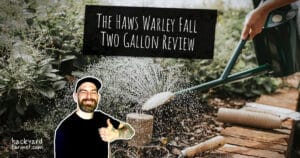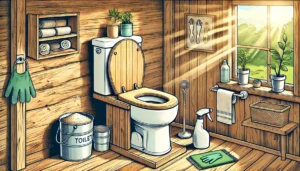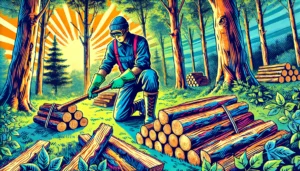Table of contents
- Introduction for hammock camping vs tent camping
- Hammock Camping: An Overview
- Tent Camping: An Overview
- Head-to-Head Comparison: Hammock Camping vs. Tent Camping
- Best Use Cases for Hammock Camping vs. Tent Camping
- Environmental Impact of Hammock Camping vs. Tent Camping
- Common Challenges and How to Overcome Them
- Conclusion and Recommendations
Introduction for hammock camping vs tent camping
Deciding between hammock camping vs tent camping is a common challenge for outdoor enthusiasts planning their next adventure. Camping enthusiasts often face a tough choice: hammock camping or tent camping. Both styles come with unique advantages, but the right option depends on factors like:
- Your environment (wooded areas vs. open spaces),
- Camping goals (solo backpacking vs. group trips),
- Personal preferences (minimalist vs. spacious setups).
Ready to elevate your camping experience? Explore the innovative features of the Haven Lay Flat Hammock Tent and gear up for your next adventure!

Why Hammock Camping?
- Lightweight and portable design.
- Perfect for solo travelers and backpackers.
- Easy to set up in wooded areas.
- Keeps you elevated off uneven or rocky ground.
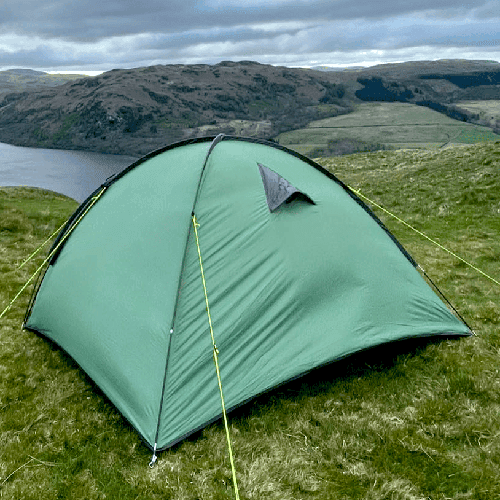
Why Tent Camping?
- Familiar enclosed space for privacy and protection.
- Great for families or groups.
- Ideal for treeless or open camping areas.
- Provides ample room for gear storage.
In this article, we’ll:
- Compare the key differences between hammock and tent camping.
- Weigh the pros and cons of each setup.
- Highlight the best use cases to help you choose the right gear.
By the end, you’ll have everything you need to enjoy a more comfortable and rewarding outdoor experience.
Hammock Camping: An Overview
What is Hammock Camping?
Hammock camping is a minimalist approach to outdoor sleeping where campers use a hammock as their primary shelter. Instead of relying on flat ground, hammocks are suspended between two anchor points, such as trees, making them versatile and adaptable to various terrains.
Key Benefits of Hammock Camping
- Portability:
Hammocks are lightweight and easy to pack, making them ideal for backpackers and ultralight hikers. - Versatility:
Set up your hammock anywhere with anchor points—on uneven terrain, above wet ground, or even in dense forests. - Comfort:
Sleep elevated and avoid rocks, roots, and uneven surfaces, ensuring a better night’s rest. - Reduced Environmental Impact:
No need to clear the ground or disturb vegetation, making hammocks an eco-friendly option for Leave No Trace camping.
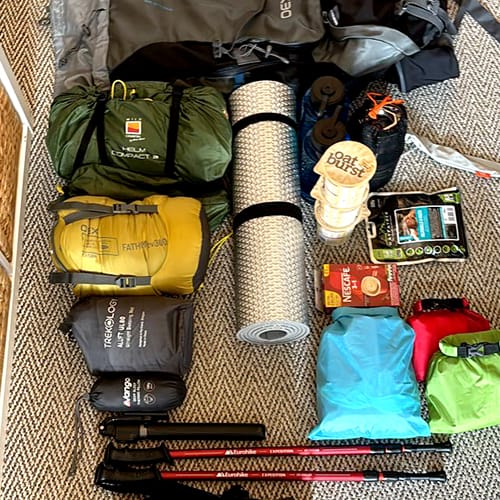
Essential Gear for Hammock Camping
To get started, you’ll need the following:
- Hammock: Choose a durable, lightweight model suitable for camping.
- Straps and Carabiners: Ensure your suspension system is tree-friendly and easy to adjust.
- Rainfly or Tarp: Protect yourself from rain and wind.
- Bug Net: Keep insects at bay while sleeping.
- Underquilt or Sleeping Pad: Stay warm in colder weather.
Who is Hammock Camping Best For?
Hammock camping is ideal for:
- Solo Campers: Those who prioritize portability and quick setups.
- Backpackers: Hikers needing lightweight shelter options.
- Minimalist Campers: Anyone seeking a simple, compact, and eco-friendly camping experience.
For an in-depth look at one of the most innovative hammock tents, check out our guide on the Haven Lay Flat Hammock Tent.
Tent Camping: An Overview
What is Tent Camping?
Tent camping is the traditional approach to outdoor shelter, where campers use a fabric structure supported by poles to create an enclosed space. Tents are versatile, offering varying sizes and designs to suit solo adventurers, families, and groups.
Key Benefits of Tent Camping
- Spacious and Private:
Tents provide an enclosed space, making them ideal for families or campers needing privacy. - Weather Protection:
Fully enclosed designs protect against wind, rain, and cold, ensuring comfort in unpredictable weather. - Ample Storage:
Tents offer extra space to store gear, keeping it secure and protected from the elements. - Suitability for All Terrains:
Designed for flat, clear ground, tents can be set up in treeless areas like deserts or open plains.
Types of Tents
- Dome Tents: Compact and easy to set up, great for solo or small group camping.
- Family Tents: Spacious and multi-room designs for group comfort.
- Pop-Up Tents: Quick and hassle-free setup for casual trips.
- Backpacking Tents: Lightweight options for hikers focused on portability.

Essential Gear for Tent Camping
When preparing for tent camping, ensure you have:
- Tent: Choose one suited for your group size and environment.
- Tent Poles and Stakes: Durable materials for stability.
- Rainfly: Extra layer for waterproofing in heavy rain.
- Ground Tarp: Adds insulation and protects the tent floor from damage.
- Sleeping Bag and Pad: Provides comfort and insulation against the cold ground.
Who is Tent Camping Best For?
Tent camping is ideal for:
- Families and Groups: Those needing extra space for people and gear.
- Treeless Camping: Suitable for open areas like deserts or beaches.
- All-Weather Campers: Those seeking full protection in diverse climates.
Head-to-Head Comparison: Hammock Camping vs. Tent Camping
In this section, we’ll compare hammock camping and tent camping side-by-side to help you identify which option best suits your needs. Whether you value portability, comfort, or weather protection, this breakdown will clarify the strengths and weaknesses of each setup.
Quick Comparison Table
| Feature | Hammock Camping | Tent Camping |
| Portability | Lightweight and compact; ideal for solo hikers. | Bulkier; better for car camping. |
| Setup | Quick with anchor points; works on uneven terrain. | Requires flat, cleared ground. |
| Comfort | Elevated sleeping avoids rocks and roots. | Flat surface allows more movement. |
| Weather Protection | Requires tarp and rainfly for full coverage. | Fully enclosed for better all-around protection. |
| Cost | Generally more affordable. | Wider price range; can be expensive for high-end models. |
Detailed Comparison
1. Portability
Hammocks:
- Weigh less than a standard tent.
- Compact enough for long treks and solo trips.
- Easily fits into a backpack.
Tents:
- Heavier and bulkier due to poles and additional components.
- Best suited for car camping or short-distance hikes.
2. Setup
Hammocks:
- Fast to set up with anchor points like trees.
- Works on uneven or rocky terrain.
- Challenges arise in treeless environments.
Tents:
- Requires flat, cleared ground for stability.
- Modern pop-up designs reduce setup time.
- Offers a more stable base in windy conditions.
3. Comfort
Hammocks:
- Provides elevated sleeping, avoiding wet or uneven ground.
- May require an underquilt or pad for insulation.
- Less spacious for storing gear or changing clothes.
Tents
- Spacious interior allows movement and gear storage.
- Flat sleeping surface accommodates multiple people.
- Suitable for larger groups and families.
4. Weather Protection
Hammocks:
- Needs additional gear like tarps and bug nets for protection.
- Offers great ventilation during hot weather.
Tents:
- Enclosed design shields campers from wind, rain, and insects.
- Can trap heat in colder climates, providing better warmth.
5. Cost
Hammocks:
- Budget-friendly options available for most beginners.
- Advanced setups with accessories (e.g., underquilts) increase costs.
Tents:
- Entry-level tents are affordable, but high-end models can be pricey.
- Price often correlates with size, material, and weather resistance.
Which Option is Right for You?
Choose hammock camping if you:
- Prefer portability and minimalist setups.
- Are camping in forested or uneven areas.
- Want an affordable option for solo trips.
Choose tent camping if you:
- Need extra space for people or gear.
- Are camping in treeless or open environments.
- Prioritize all-around weather protection.
Best Use Cases for Hammock Camping vs. Tent Camping
Different camping styles suit different situations. Whether you’re trekking through forests, camping with your family, or braving the winter chill, the choice between hammock camping and tent camping depends on your specific needs.
When to Choose Hammock Camping
- Solo Camping Trips:
Hammock camping is perfect for solo travelers who value lightweight, compact gear and fast setups.- Example: A minimalist backpacker hiking through dense forests.
- Backpacking Adventures:
Ideal for hikers who prioritize portability and need shelter on uneven or rocky terrain.- Example: Long-distance trekking on the Appalachian Trail.
- Warm Weather Camping:
Hammocks offer excellent ventilation, keeping you cool during hot summer nights.- Example: Camping in tropical or subtropical regions.
- Eco-Friendly Camping:
Hammocks minimize environmental impact by avoiding ground disturbance.- Example: Practicing Leave No Trace principles in national parks.
When to Choose Tent Camping
- Family or Group Trips:
Tents provide ample space for multiple people and gear, making them ideal for group adventures.- Example: Family camping trips in open campgrounds.
- Treeless Environments:
Tents are better suited for open spaces like deserts, beaches, or plains where hammock anchors are unavailable.- Example: Exploring Iceland’s tundra or camping on sandy coastlines.
- Winter Camping:
Enclosed tents offer better insulation and warmth, keeping you comfortable in cold climates.- Example: Snow camping in alpine regions.
- Extended Stays:
Tents provide more storage and stability for longer camping trips.- Example: Basecamp setups for multi-day fishing or hunting trips.
Choosing Based on Terrain and Environment
- Forests and Wooded Areas:
- Hammock camping excels due to abundant anchor points.
- Flat, Open Spaces:
- Tent camping is more practical with no reliance on trees or structures.
- Rough or Wet Terrain:
- Hammocks avoid the discomfort of sleeping on uneven, rocky, or damp ground.
Quick Guide: Matching Activities to Shelter Types
| Activity | Best Option | Why? |
| Backpacking | Hammock Camping | Lightweight and portable. |
| Family Camping | Tent Camping | Spacious and family-friendly. |
| Cold Weather Adventures | Tent Camping | Provides better insulation. |
| Eco-Friendly Camping | Hammock Camping | Minimal environmental impact. |
| Beach Camping | Tent Camping | Suited for treeless environments. |
Environmental Impact of Hammock Camping vs. Tent Camping
For outdoor enthusiasts, preserving nature is a top priority. Both hammock and tent camping can impact the environment differently, so choosing the right setup depends on how and where you camp.
Environmental Impact of Hammock Camping
- Minimal Ground Disturbance:
Hammocks leave no trace on the ground, avoiding damage to vegetation or soil.- Example: Ideal for forested areas where protecting the undergrowth is essential.
- Tree-Friendly Options:
Modern hammocks use wide, tree-friendly straps that prevent bark damage and promote sustainable camping practices.- Tip: Always choose straps that are at least 1 inch wide to distribute weight evenly.
- Reduced Footprint:
Hammocks eliminate the need to clear or flatten areas, minimizing ecological disruption.- Benefit: Perfect for Leave No Trace principles, keeping nature undisturbed.
Environmental Impact of Tent Camping
- Ground Impact:
Tents often require flat, cleared areas, which can disturb vegetation and compact soil.- Example: Setting up a tent in grassy meadows may lead to long-term plant damage.
- Campfire Proximity:
Tent camping near a fire pit often results in a higher concentration of human activity, increasing wear on the environment.- Tip: Use designated campgrounds to mitigate this impact.
- Adaptability to Treeless Areas:
While tents can be used anywhere, their reliance on ground space can sometimes necessitate campsite alterations.- Challenge: Finding a tent-friendly space in rugged or wet terrains can lead to minor environmental harm.
Eco-Friendly Camping Tips
- For Hammock Campers:
- Use tree-friendly straps and avoid areas with fragile or young trees.
- Always remove your hammock after use to prevent long-term pressure on trees.
- Pack out all waste and avoid camping near water sources to prevent soil erosion.
- For Tent Campers:
- Use a ground tarp to minimize damage to the campsite.
- Stick to established camping areas to avoid disturbing untouched land.
- Choose lightweight or eco-friendly tent materials to reduce your environmental footprint.
Comparison Table: Environmental Impact
| Factor | Hammock Camping | Tent Camping |
| Ground Disturbance | Minimal (elevated above ground). | Moderate to high (flattening required). |
| Tree Usage | Requires anchor points; tree-friendly straps mitigate damage. | Not reliant on trees. |
| Vegetation Impact | Minimal impact when set up responsibly. | Vegetation can be crushed or removed. |
| Leave No Trace | Aligns closely with principles. | Depends on setup location and practices. |
Which is More Eco-Friendly?
- Hammock camping generally has a smaller environmental footprint due to its elevated design and minimal ground disturbance.
Common Challenges and How to Overcome Them
Every camping setup comes with its unique set of challenges. Whether you’re new to hammock camping or a seasoned tent camper, knowing potential difficulties and their solutions can make your experience smoother.
Challenges of Hammock Camping
- Limited Anchor Points:
- Problem: Finding suitable trees or structures in treeless areas (e.g., deserts, beaches).
- Solution: Use portable hammock stands or switch to tent camping in such environments.
- Cold Weather Camping:
- Problem: Hammocks offer less insulation than tents in cold climates.
- Solution: Use an underquilt, sleeping pad, or thermal blanket to retain warmth.
- Gear Storage:
- Problem: Lack of space for storing gear.
- Solution: Use a gear sling or tarp under the hammock to keep items off the ground and dry.
- Rain and Wind Protection:
- Problem: Exposure to elements without proper coverage.
- Solution: Pair your hammock with a waterproof rainfly and wind-resistant tarp.
- Setup Time for Beginners:
- Problem: Inexperienced campers may find hammock setups tricky.
- Solution: Practice setting up at home and ensure you have an adjustable suspension system.
Challenges of Tent Camping
- Ground Conditions:
- Problem: Requires flat, cleared ground, which may not be available in all locations.
- Solution: Carry a ground tarp to level out uneven surfaces and protect the tent floor.
- Weight and Portability:
- Problem: Tents are heavier and bulkier than hammocks.
- Solution: Choose lightweight backpacking tents or divide components among group members.
- Setup Time:
- Problem: Some tents take longer to assemble.
- Solution: Opt for pop-up tents or pre-assembled designs for quicker setups.
- Ventilation Issues:
- Problem: Tents can become stuffy in warm weather.
- Solution: Look for tents with mesh panels or vents for better airflow.
- Environmental Impact:
- Problem: Flattening vegetation and compacting soil.
- Solution: Stick to designated campsites or use eco-friendly ground practices.
Quick Fix Guide
| Challenge | Hammock Camping Solution | Tent Camping Solution |
| Anchor Points | Use portable stands. | Not applicable. |
| Cold Weather | Add underquilt or thermal insulation. | Use thicker sleeping bags or pads. |
| Gear Storage | Use a gear sling under the hammock. | Use tent vestibules or gear organizers. |
| Rain and Wind | Pair with rainfly and tarp. | Ensure tent has a waterproof rainfly. |
| Setup Time | Practice setup in advance. | Opt for pop-up or pre-assembled tents. |
Adapting to Challenges
Both hammock and tent camping present manageable challenges. By preparing the right gear and practicing your setup, you can overcome these hurdles and enjoy a comfortable trip.
Conclusion and Recommendations
Choosing between hammock camping and tent camping ultimately depends on your personal preferences, camping environment, and the type of experience you’re looking for. Both setups have their strengths and challenges, but the right choice can elevate your outdoor adventures.
Key Takeaways
Hammock Camping
- Best For:
- Solo travelers and minimalist campers.
- Forested or uneven terrains with plenty of anchor points.
- Lightweight, portable, and eco-friendly camping.
- Considerations:
- Additional insulation needed in cold weather.
- Limited gear storage requires creative solutions.
Tent Camping
- Best For:
- Families or groups needing space and privacy.
- Treeless or open areas like beaches or plains.
- Versatile, all-weather protection with ample storage.
- Considerations:
- Heavier and bulkier, making it less portable for long hikes.
- Requires flat, cleared ground for setup.
Our Recommendation
- Choose Hammock Camping if you value portability, minimalist design, and eco-friendly practices.
- Choose Tent Camping if you need space for multiple people, gear storage, or protection in extreme weather conditions.
What’s Next?
Now that you’ve explored the differences between hammock camping and tent camping:
- Check out our Ultimate Guide to Hammock Camping for tips, gear recommendations, and beginner advice.
- Explore our Top Tents for Group Camping to find the perfect tent for your next adventure.
Both options can provide incredible camping experiences when chosen thoughtfully. The key is to match your gear to your environment and personal needs. Ready to elevate your camping experience? Explore the innovative features of the Haven Lay Flat Hammock Tent and gear up for your next adventure!



